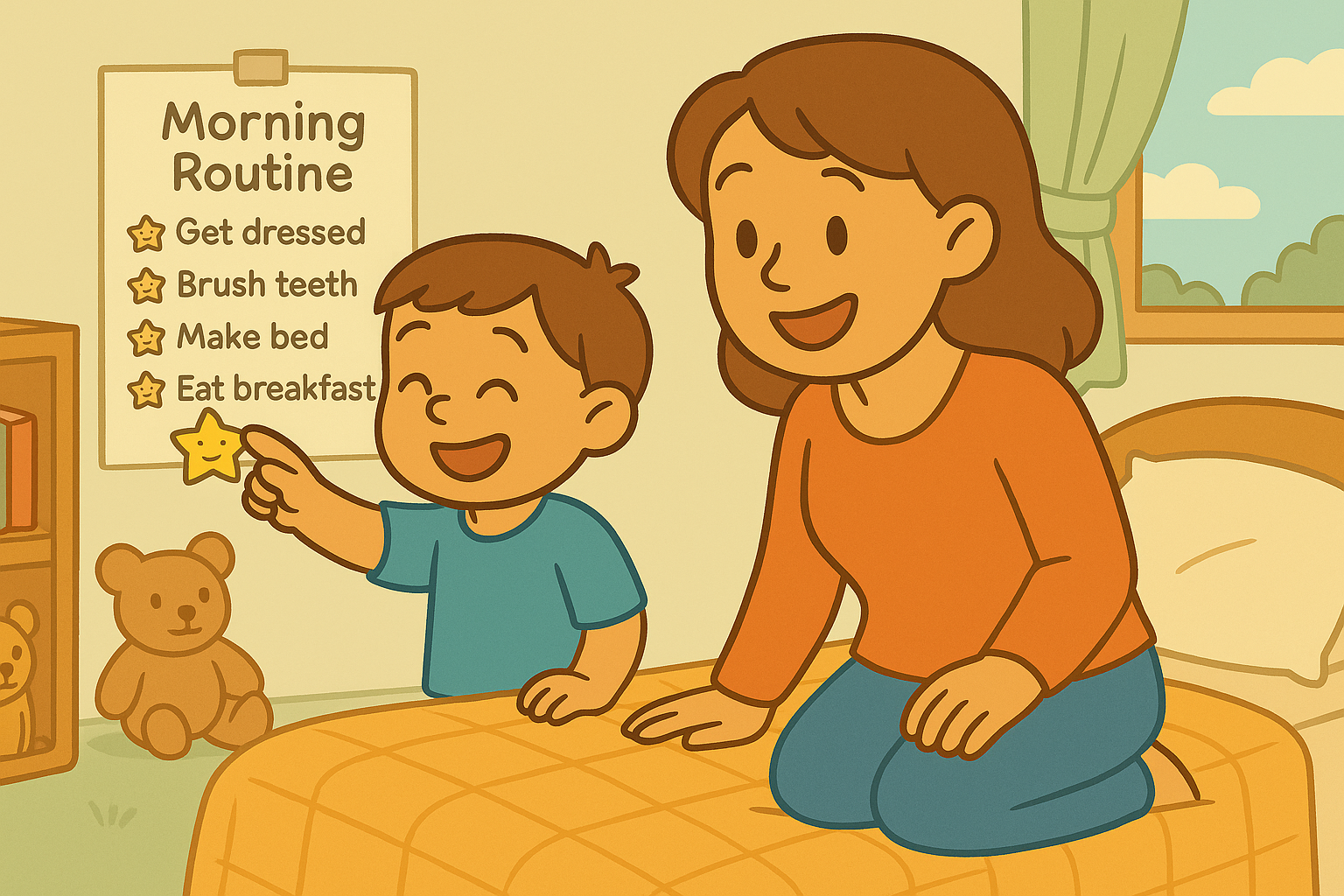The Role of Routine in Emotional Predictability
The Role of Routine in Emotional Predictability
For young children, the world can feel big, busy, and full of surprises. Routines act like a gentle rhythm beneath their day — creating structure, security, and emotional balance.
When a child knows what comes next, their brain relaxes. Predictability helps them feel safe, confident, and in control — all key ingredients for emotional regulation and early learning success.
Why Emotional Predictability Matters
Emotional predictability is the foundation of self-regulation. It helps children manage transitions, handle surprises, and respond calmly when plans change.
Without predictable patterns, kids can feel anxious or reactive — unsure how to prepare for what’s next. Routines act as an emotional anchor, giving them cues that signal, “You’re safe. You know this.”
This emotional rhythm supports focus, reduces power struggles, and strengthens parent-child trust.
How the Brain Learns Through Routine
When a child experiences repeated, predictable sequences — like bedtime, meal prep, or morning dressing — their brain starts forming neural connections that support self-regulation.
Predictable routines:
Strengthen memory and sequencing skills
Encourage independence
Provide emotional safety for new learning
This process mirrors what’s discussed in The Science of Emotional Regulation in Children, where repetition and structure build pathways for calm thinking.
The Emotional Comfort of Knowing What’s Next
Imagine waking up and not knowing what will happen in the next hour — for a toddler, that’s every day. Routines transform uncertainty into safety.
For instance:
The morning hug before breakfast says “You’re loved.”
The cleanup song before nap says “It’s time to rest.”
The bedtime story says “Your day is complete.”
Each repeated cue signals to the child’s nervous system that the world is consistent and trustworthy.
The Link Between Routine and Emotional Language
Children who live within steady routines also learn to label and discuss emotions more easily. When transitions are predictable, adults have more bandwidth to talk through feelings calmly.
For example:
“I know you’re sad that playtime is over. Let’s take a deep breath — next, it’s snack time.”
Moments like these build emotional vocabulary — much like strategies described in Building Emotional Vocabulary Through Books.
Routines make it easier to connect emotion, cause, and next step.
Predictability Reduces Power Struggles
Kids often resist when they feel out of control — not because they dislike boundaries, but because unpredictability feels unsafe.
A visual schedule or simple verbal cues help:
“After bath, we brush teeth.”
“After lunch, we go outside.”
When expectations are consistent, children stop fighting transitions and start anticipating them. Predictability becomes an invisible support system that reduces emotional friction.
Family Routines as Emotional Connection Time
Routines are not just about tasks — they’re opportunities for relationship rituals. When you greet your child every morning with the same smile or end each night with a story, you reinforce belonging and love.
These micro-moments of connection create emotional predictability at a relational level — your child knows that no matter how chaotic life feels, you’ll be there.
In Family Reflection Nights: Talking About Feelings Together, we explore how consistency in family rituals creates emotional safety.
Transition Routines: The Hidden Magic Moments
Transitions are some of the hardest times for kids — shifting from play to homework, or home to school. Mini-routines help bridge the emotional gap.
Examples include:
A “goodbye window wave” at school drop-off
A “transition song” before bedtime
A “high-five chain” before homework
When transitions become ritualized, kids shift gears more smoothly. These small, symbolic gestures help them anticipate change and regulate emotions along the way.
How Routines Support Emotional Independence
Routines also foster autonomy. When children know what to expect, they can begin to do things on their own — choosing clothes, cleaning up, or setting the table.
Each small success builds confidence and internal control. This independence reduces frustration, boosting emotional balance and self-esteem.
As explored in Building Confidence Through Simple Achievements, the pride that comes from mastery directly supports emotional regulation.
Balancing Flexibility With Structure
While routines are essential, rigidity can create stress. The goal isn’t to script every moment but to create a predictable framework that can flex when needed.
For example:
“We always have quiet time after lunch, but we can choose a story or soft music.”
“We go outside after school, but sometimes it’s the park, sometimes the backyard.”
When kids experience structure with choice, they learn emotional adaptability — predictability within safe boundaries.
Routines That Anchor Emotional Growth
You don’t need a complex schedule — just a few consistent touchpoints in each day that center your child emotionally:
Morning Routine: greeting, breakfast, short affirmations
Afternoon Routine: transition snack, calm-down activity, outdoor play
Evening Routine: bath, story, gratitude reflection, bedtime cuddle
These small, rhythmic habits reduce anxiety and help kids find peace in the ordinary moments of the day.
Routines are love made visible through rhythm. When you give your child predictable moments — a morning smile, a bedtime story, a structured meal — you aren’t just creating order; you’re teaching emotional security.
Children thrive when they know what to expect and who they can count on. Predictability doesn’t make life dull — it makes emotional growth possible.
This content is for educational purposes and is not a substitute for professional medical or psychological advice.
Popular Parenting Articles


